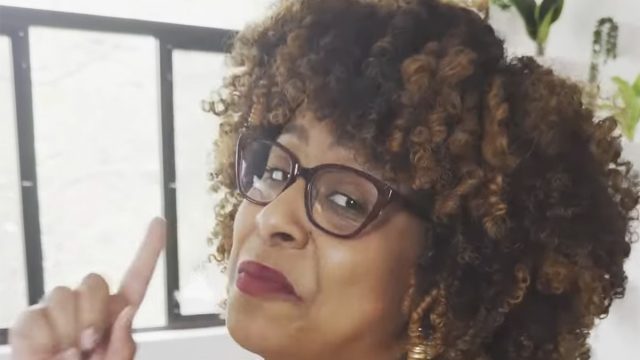5 Daily Moves to Boost Bone Density After 50
Dr. Lisa Folden is a physical therapist and body image coach who contributes to WeShape, a company devoted to helping people feel comfortable in their bodies. In one viral video, she offers five easy exercises that you can do at any age. "If you're a woman aged 51, I have five exercises you should be doing every single day to help keep you strong and build good bone density," she says at the start of the video.
During Menopause, Hormones Change, and Bone Density Decreases
"You might wonder why 51? Well, that is the average onset of menopause for most women, and with menopause comes changing hormones and decreasing bone density, which makes us more at risk for falls and fractures. We don't need that," she says in the video.
5 Exercises to Improve Bone Density
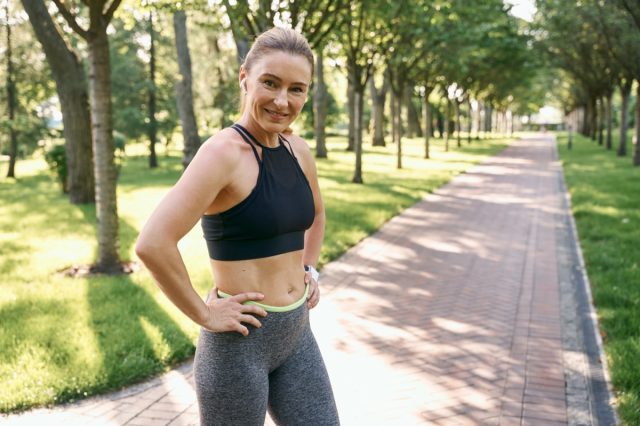
"So follow me along for these five exercises, which are weight bearing and body weight exercises to help you maintain good bone density," she says.
1. Wall Sit
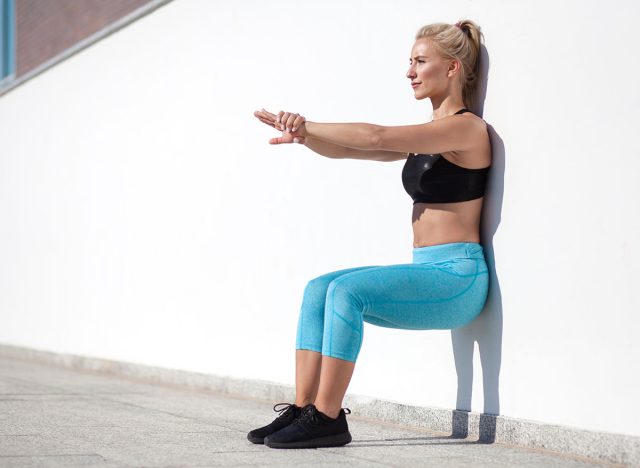
The first one is a wall sit. "You're going to get against a wall and rest your back. Walk your feet maybe 12 to 24 inches away from the wall based on your height. And then you're going to lower your body down until your knees are bent to about 90 degrees," she says.
Engage Your Core
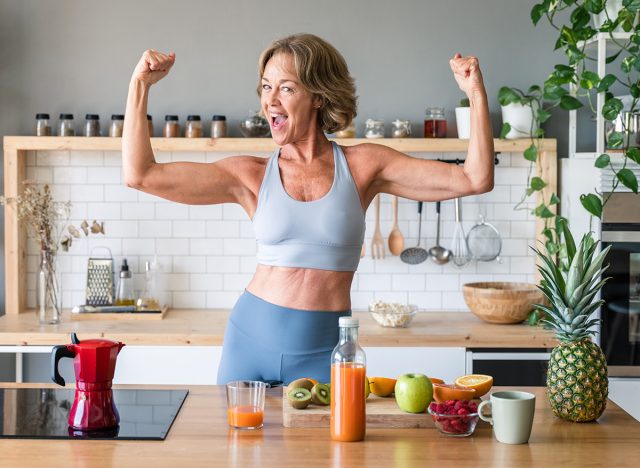
"You're going to engage your core and simply hold here. Try holding for 30 seconds and repeating this five times," she continues. "You'll feel a good burn in your quads, and your bones will definitely get the benefit of this load-bearing exercise."
RELATED: I Got Into the Best Shape of My Life at 50 by Following These 6 "Basics"
2. Mini Squats
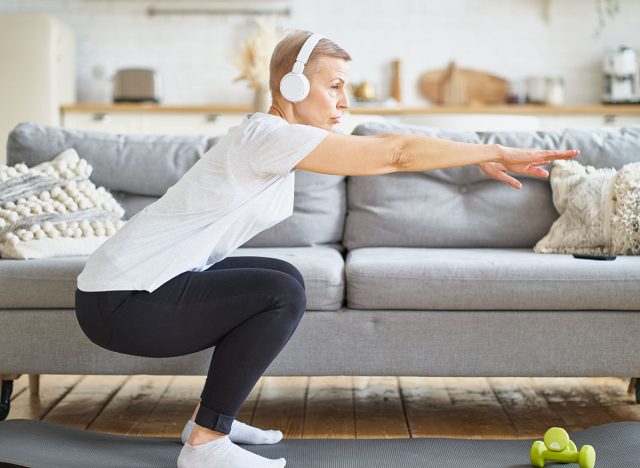
The following exercise is a mini squat. "You're going to get in a position where your feet are about hip-width apart or just wider, and your feet are slightly turned out. You're going to engage your core, and you're just going to bend and come up to standing."
Squeeze Glutes While Keeping Core Engaged
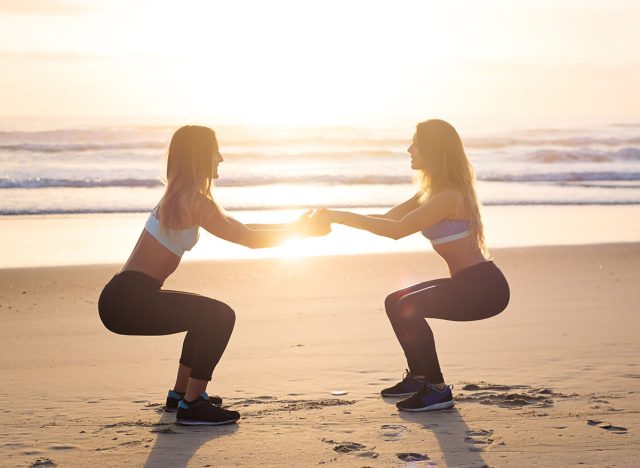
"And we're not going down low, but every time we come up, we're squeezing the glutes, we're keeping our core engaged," she says. "We're keeping our posture upright and tall, not bending over. Try to do 10 to 12 reps here, and if it feels good, repeat that twice."
3. Deadlift
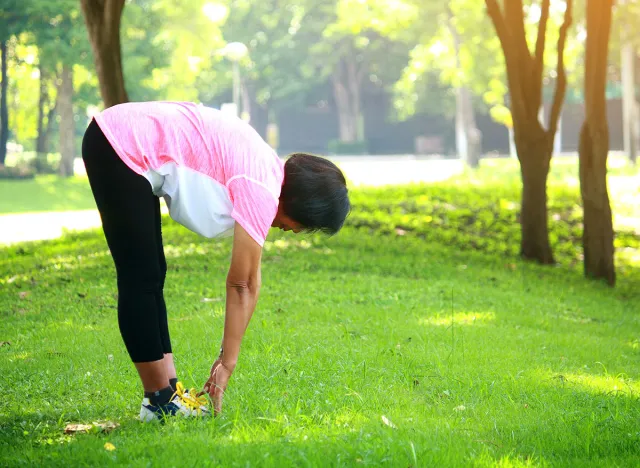
The following exercise is a deadlift. "You're going to stand with your feet about hip-width apart. Your knees are really soft, not locked back. You're going to engage your core, and you're going to hinge forward at your waist, keeping your spine straight. Then you're going to activate your glutes and your hamstrings to bring you back up to standing, squeezing," she says.
Again, Engage Your Core
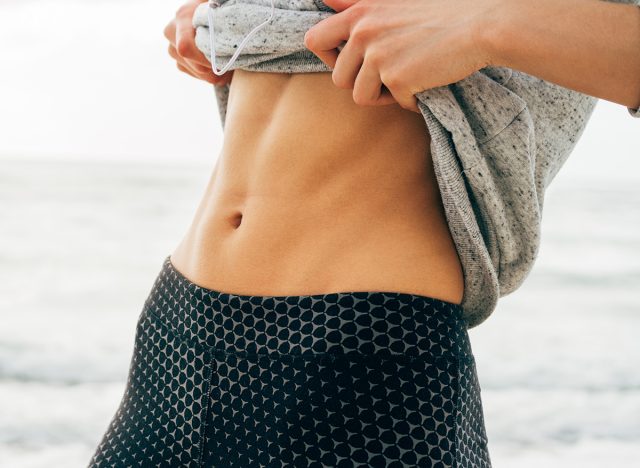
"You're going to repeat that motion down back is tall. The squeezing core is engaged. Try doing 10 to 12 of these and see how they feel. This is going to give you a great workout to your glutes and your hamstrings," she says.
4. Side Step Squat
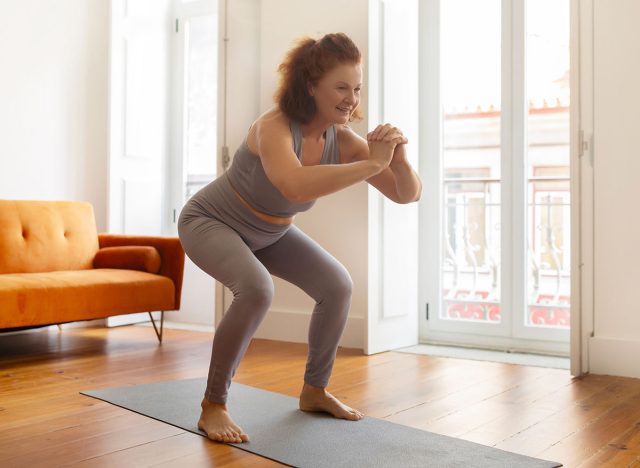
Exercise number four is called a side-step squat. She recommends getting to the end of your mat, with feet hip-width apart, and getting down into a mini squat. "Engage the core, and you're going to quickly step to the side, maintaining good distance between your feet and staying low the entire time," she says.
Engage the Core

"You can do this for about 30 seconds. You'll feel the burn, and you'll get all the benefits of this great load-bearing exercise," she explains.
RELATED: I'm 50+, and These 7 Fat-Blasting Habits Keep Me in the Best Shape of My Life
5. Wall Pushup
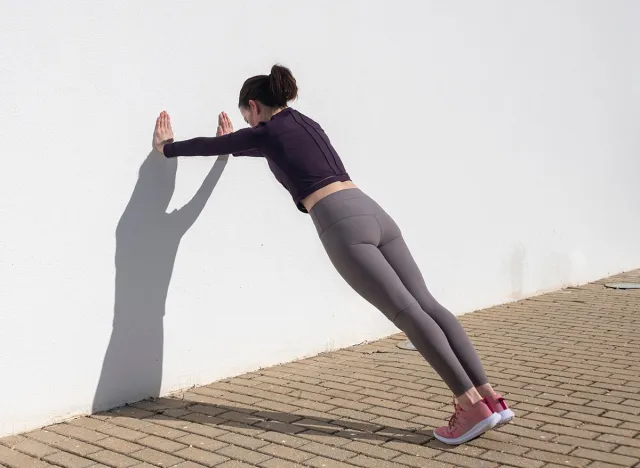
"The last exercise is a wall pushup. You are gonna go to a wall, get your hands just below shoulder height and step away from the wall so that you're in a plank position," she says.
Engage Your Core
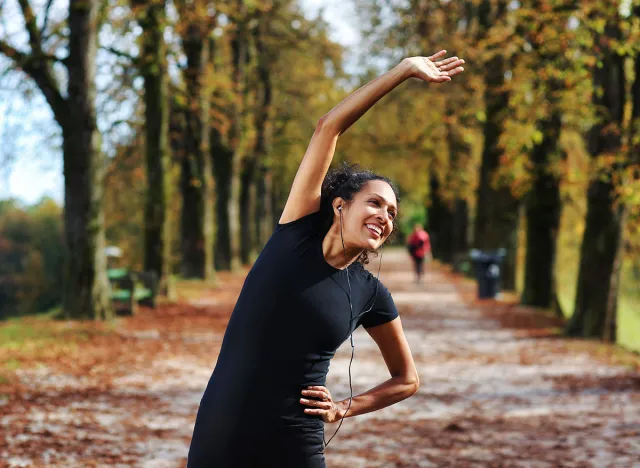
"Engage your core so that your pelvis isn't tilted forward or tucked too far under you, lower yourself down using your arms, and push yourself away. Maintain good form. Keep your chin and repeat 10 to 15 times," she explains.
Do These Exercises at Least Twice a Week
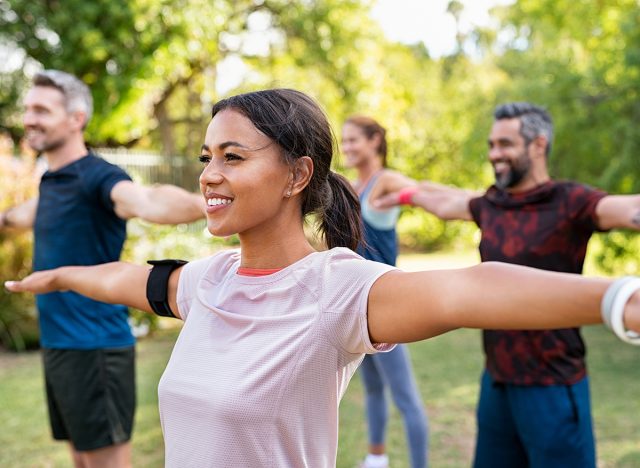
"Do all five of these exercises a couple of times a week. And as you're approaching menopause, you will see the benefits of improved bone density and overall strength," she says.
RELATED: I Lost Inches From My Waist on Ozempic and Here Are 15 Weight Loss Tips I Have for You
Menopause Speeds Up Bone Loss
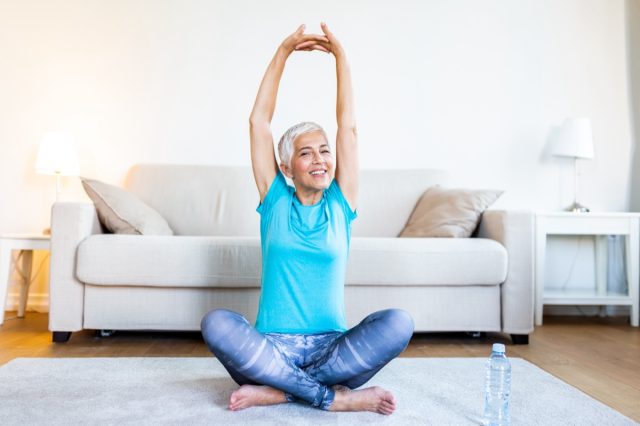
According to the Endocrine Society, menopause significantly speeds up bone loss and increases the risk of osteoporosis. "Research indicates that up to 20% of bone loss can happen during these stages, and approximately 1 in 10 women over the age of 60 are affected by osteoporosis worldwide," they say.
Exercise and Diet Can Make a Big Difference
While there are drugs to treat this, exercise and diet can make a big difference. "A customized exercise regimen supports proper maintenance of the skeleton, including resistance, balance, and weight-bearing exercises," they say. And if you enjoyed this article, take advantage of these 20 Superfoods for People Over 50.
